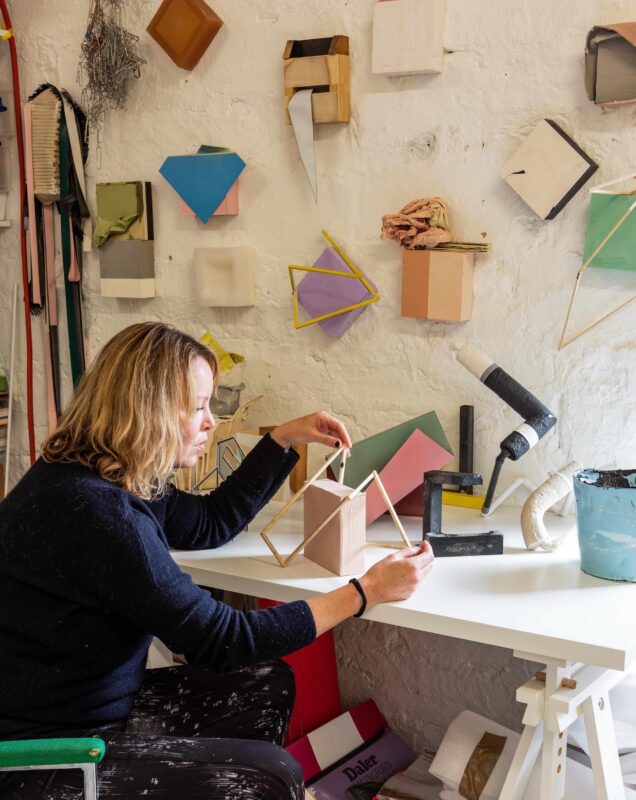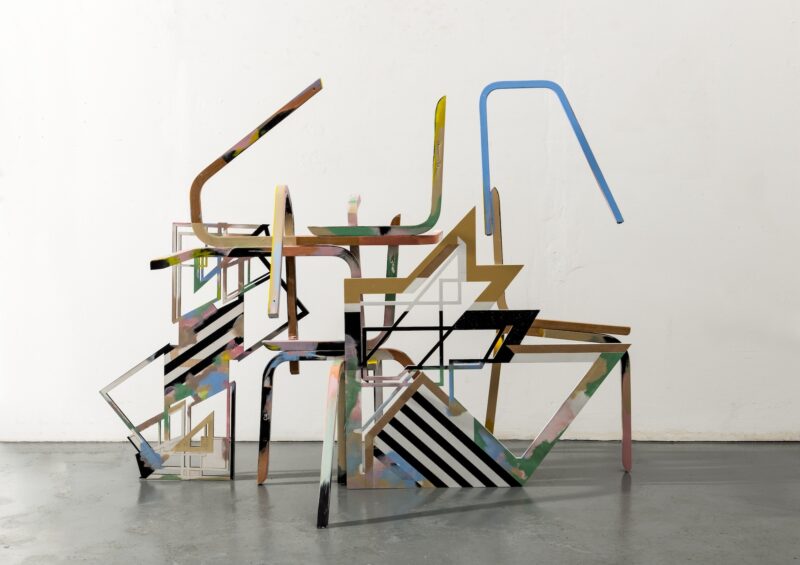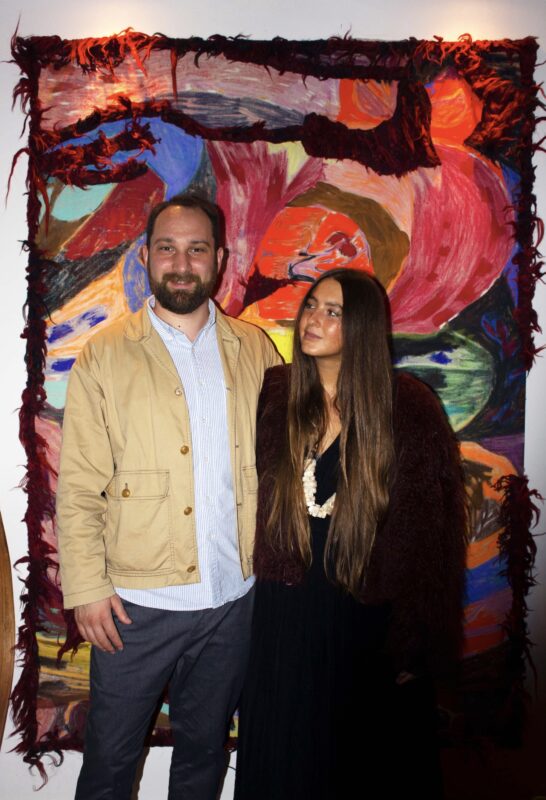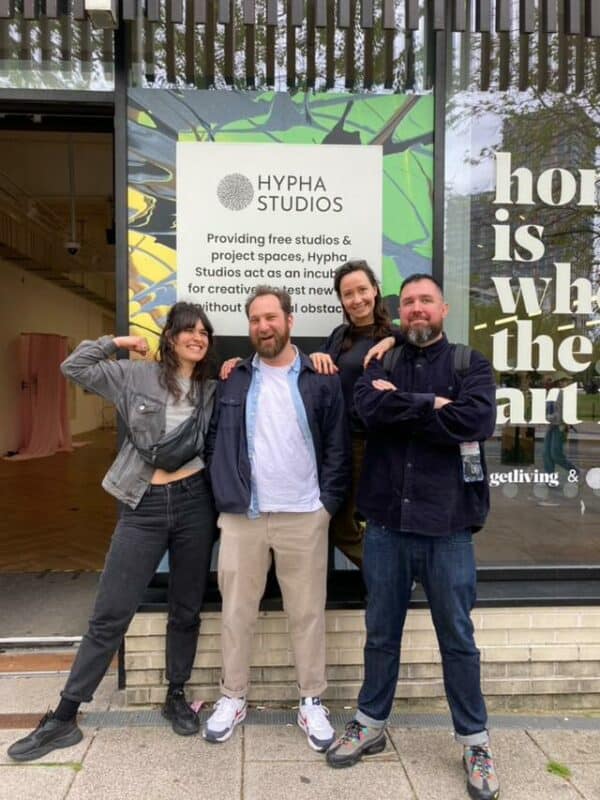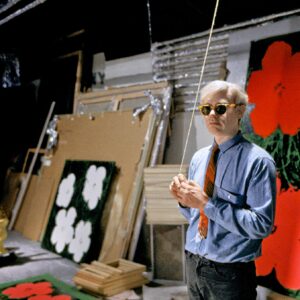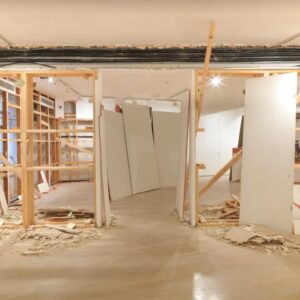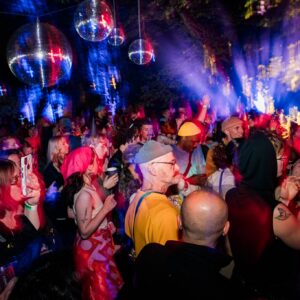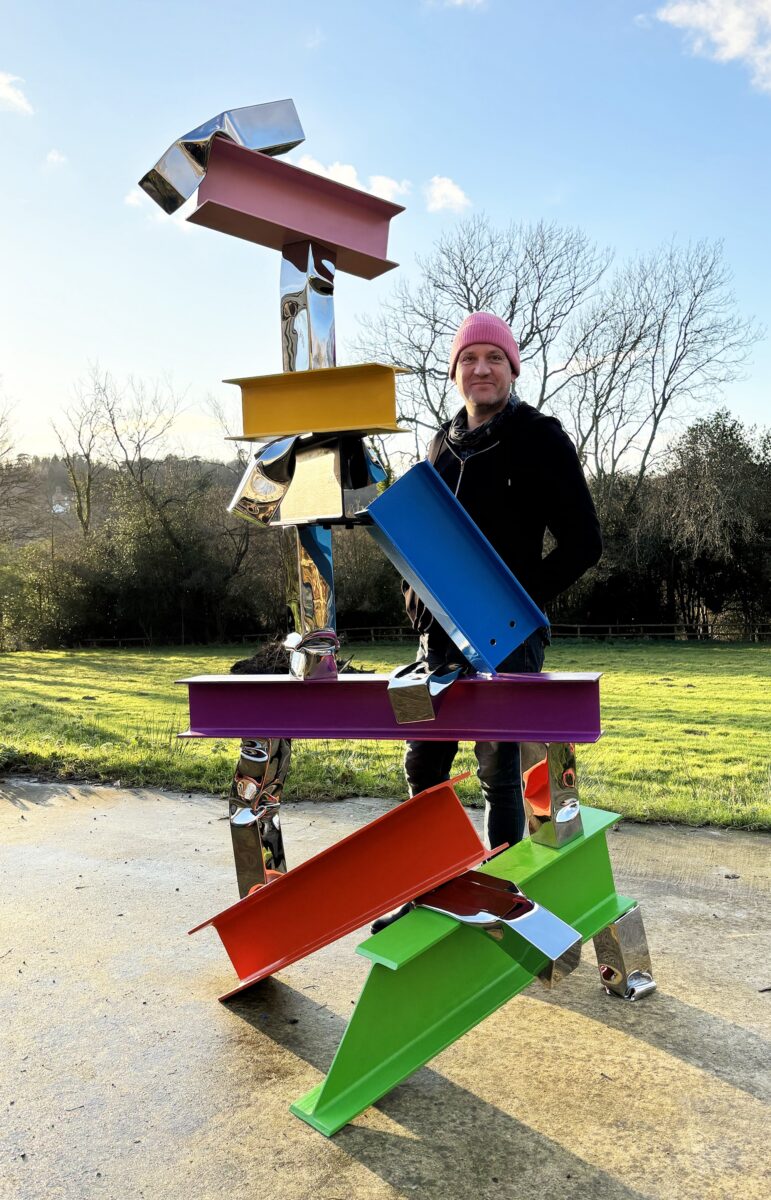
Julian Wild talks to Thorp Stavri for FAD Magazine about his art practice and his upcoming exhibition Topping Out.
Could you tell us about yourself and your practice?
I’ve been making sculptures since I graduated from Kingston University in 1995. Alongside that I’ve taught, working in higher education. My studio is more like a fabrication workshop which enables me to work in all sorts of materials from wood, to clay, to plastics and of course Metal. This environment enables me to really explore the potential of materials using industrial construction processes. It also enables me to subvert those materials and processes so that I can change their function. I oscillate between creating speculative studio based work and larger outdoor commission projects.
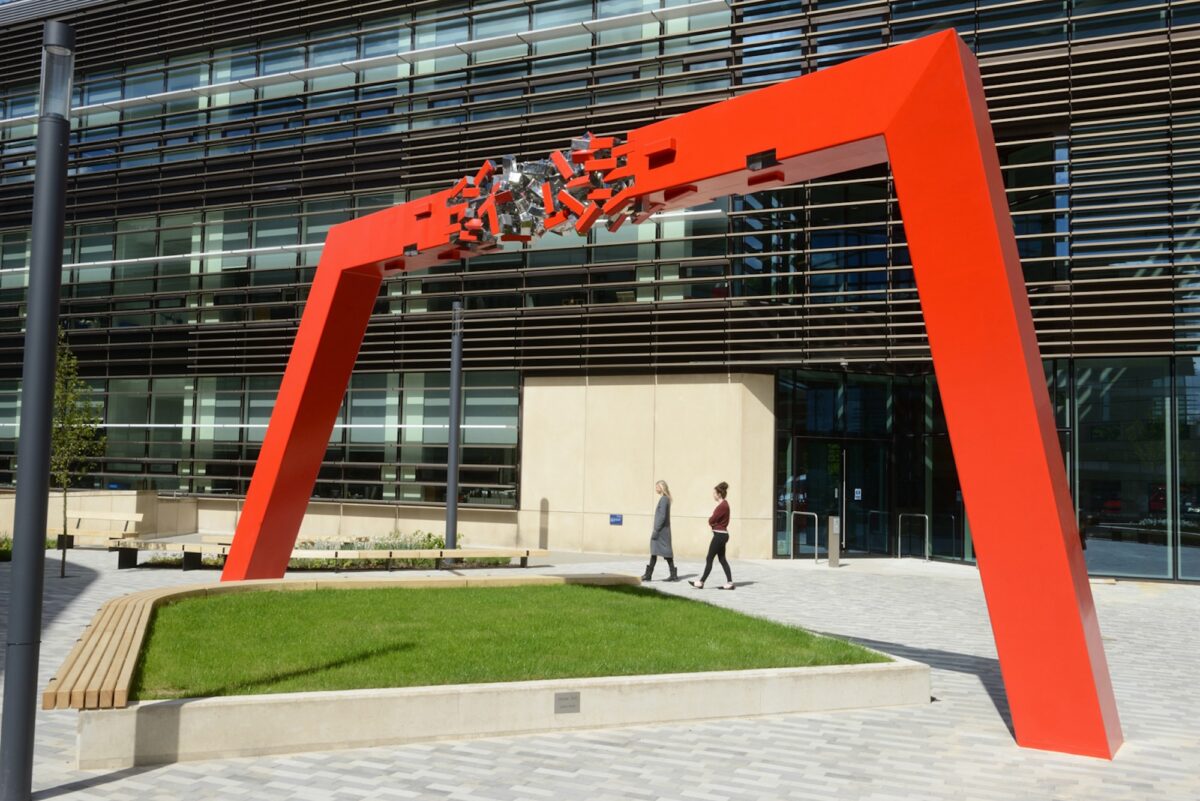
You have an exhibition entitled Topping out coming up at Gurr Johns. What initially drew you to the term Topping out and how does it connect to the themes explored in your work?
The title for the show comes from my love of colloquialisms. I’ve also always felt that titling is a very important part of a piece of work or body of works. I first came across this term when I was working on a commission for the University of Oxford. They were just completing the structure of the Big Data Institute there and someone mentioned that there would be a ‘topping out’ ceremony. I later discovered that Topping out is a builders right or ceremony traditionally held when the last beam is placed at the top of the structure during its construction. So that seemed a perfect fit for me with this exhibition as all the works in the show are made using I-beams: I think the I-beam is a really fascinating phenomenon that has transformed the construction industry, it’s also featured quite heavily in the sculpture of modernist artists such as Anthony Caro and David Smith. I’ve used off-cuts of these beams to create improbable scenarios with the sculptures that I’ve made. Beams are crushing polished stainless steel elements in cartoon-like events or they are enabling crumpled stainless steel elements to build themselves into haphazard structures.
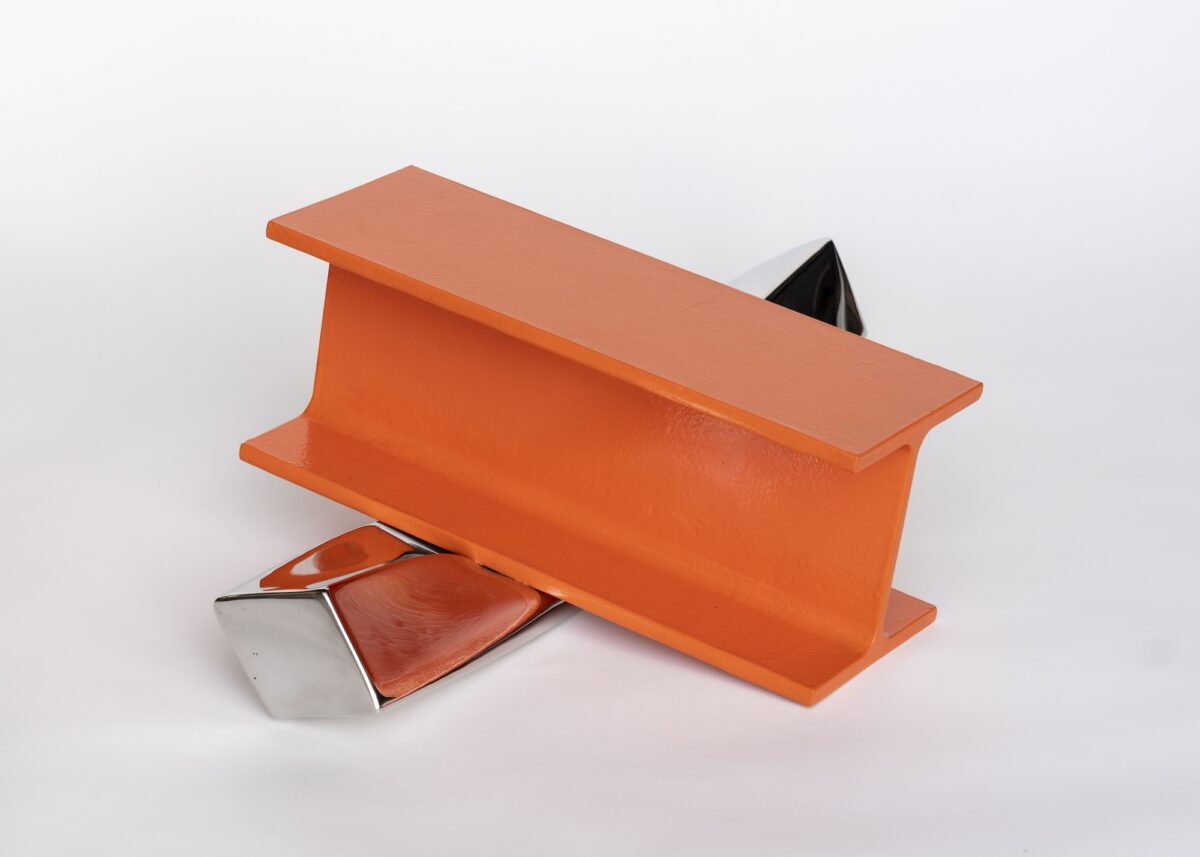
How does the work in the show differ from previous work/exhibitions?
For the exhibition I’ve created a new complete family of works. So in one space we have an installation of pieces called ‘Crush’ which consists of 13 I-beams which appear to have landed on polished bars of stainless steel. These pieces involve a violent action and are subverting ideas of finish that are associated with these kinds of seductive surfaces. Alongside this installation, I am presenting a brand-new piece called ‘Folly’ Which is a parent piece to the ‘Crush’ series and consists of an accumulation of I-beams and polished elements that are communing together to create a seemingly hap-hazard 2 metre high structure. Colour also plays a really important part in my practice and in this exhibition for the first time I am using multiple colours to create a really playful environment. Alongside the Sculpture, I am showing new works on paper which I made using wax resist and fountain pen ink. These are very physical, elemental and gestural pieces that suggest the movement found within the sculptures such as folding, tilting and toppling.
You’ve shifted focus in this collection from large scale commissions to smaller more intimate works. What motivated this transition and how is it influenced the way you approach form and materiality?
With the large scale commissions I try to avoid compromising their content. So it’s very important for me that the outdoor pieces relate strongly to the work that I’m making in the studio, as well as the site. But at the same time there will always be differences and there will always be restrictions. The opportunity to do the exhibition represents a really great chance to create a body of work without any compromise. I hit 50 recently and I think that has a part to play in this, as I’ve really started to think about the work that I want to make, and the work that I don’t want to make. So to me, the show represents a big step change in my practice.
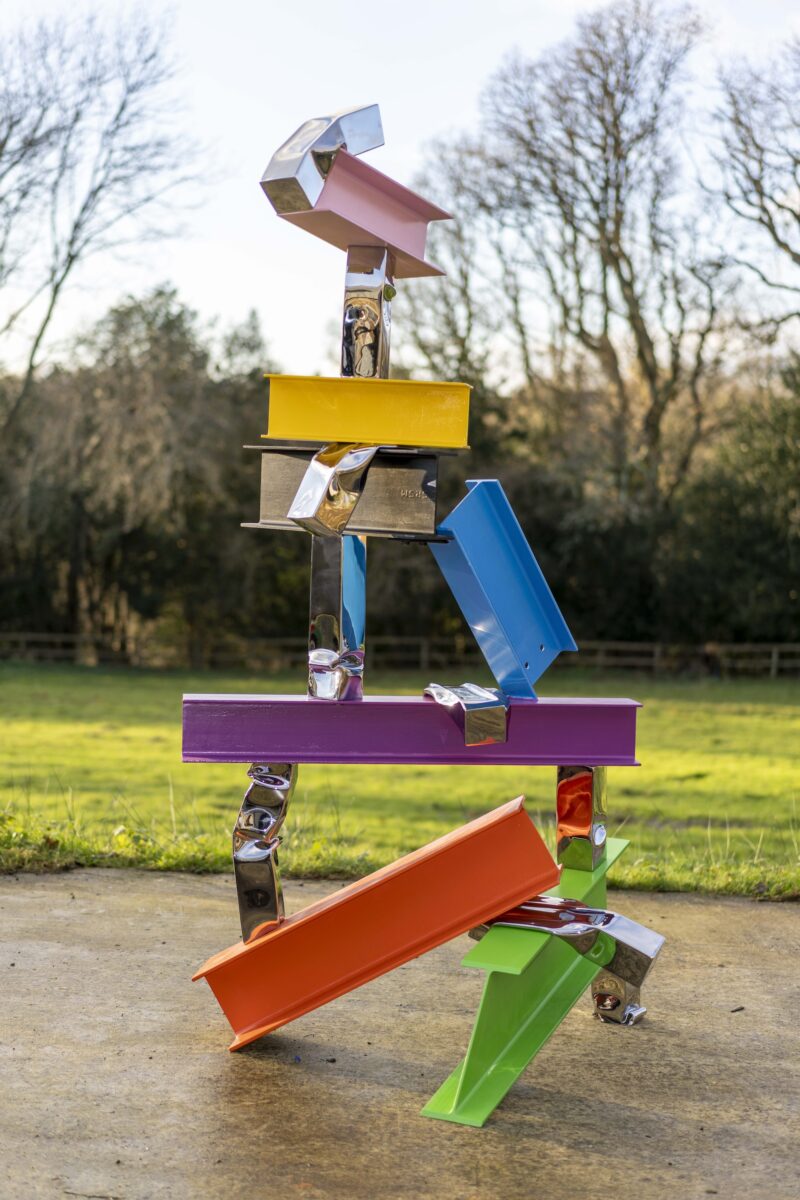
The exhibition explores themes of success, collapse, and the thresholds between stability and uncertainty could you elaborate on how these ideas influence your creative process and the materials you choose to work with
I work with Metal, and for me it’s really important to present the manipulation of the material in the work that I make. I enjoy subverting materials so that hard becomes soft and soft becomes shiny or even liquid. This layering for me creates a transformation. Specifically, having bends and folds within the form for me presents a sort of vulnerability. With a sculpture like Folly; I’m trying to create something that’s both stable and unstable. It’s made from materials that we associate with strength and stability and a sort of heroism. But yet what I’m creating is something that feels unstable and vulnerable and ultimately flawed. For me that has a strong relationship to being human.
Julian Wild: Topping Out, 20th – 25th January 2025, Gurr Johns
Curated by Eric Thorp and Nicholas Stavri (Thorp Stavri)
Talk and tour of the exhibition: Curators talk Saturday 25th January 11AM
Opening Hours: 10AM – 5PM Monday to Friday 10AM – 4PM Saturday
About
Julian Wild has been making sculpture for 30 years. After graduating from Kingston University, Wild worked as an assistant to Damian Hirst before developing his own career path, leading him to exhibitions at venues including: Leighton House Museum, Modern Art Oxford, Chatsworth House (Sotheby’s), Sculpture in the City, Canary Wharf, The Fine Art Society, V22, William Benington Gallery and The Ann Norton Sculpture Garden in Florida.
He has completed commissions for: The Forest of Dean Sculpture Trail, The University of Oxford, Modern Forms, Fidelity Investments, Cass Sculpture Foundation, Crest Nicholson, Wyeth Europa, Schroders Investment Management, Radley College, Jerwood Sculpture Park, Sculpture in the Parklands in Ireland, Sir George Iacobescu, Cate Blanchett, The Lightbox Gallery and Canary Wharf Group.
Wild attended an Albers Foundation residency at Thread, Senegal in 2024. He was awarded The Royal Borough of Kensington and Chelsea Arts club Trust Studio Bursary from 2009-2012. He won an individual Arts Council Grant in 2011, in 2005 he was a finalist in the Jerwood Sculpture Prize and won the Millfield Sculpture Prize in the same year.
Julian Wild was Vice-president of The Royal Society of Sculptors from 2015-2019. He is Sculpture Leader and Lecturer at The Art Academy London and is a Trustee of Chelsea Arts Club Trust and The Discerning Eye. He lives and works in Sussex, UK.
Thorp Stavri (@thorpstavri) are a London based curatorial platform, comprising curators Eric Thorp and Nicholas Stavri. They are committed to developing and supporting artists’ practices and accessibility to art through exhibitions, collaboration, residencies, talks, workshops and an arts podcast.
Thorp Stavri have been awarded the Arts Council England Project Grants for the curation of ‘2 For 1’ at an out-of-use Sainsbury’s, Stratford (2023), the production of ‘The Factory Project‘ at Thameside Industrial Estate, Silvertown (2021) and for ‘Five Hides’ at the historic Manor Place Baths, Walworth (2020). During 2022/23 they curated a series of institutional exhibitions in partnership with Two Temple Place, Embankment, The Royal Society of Sculptors, South Kensington and The Art House, Wakefield.
